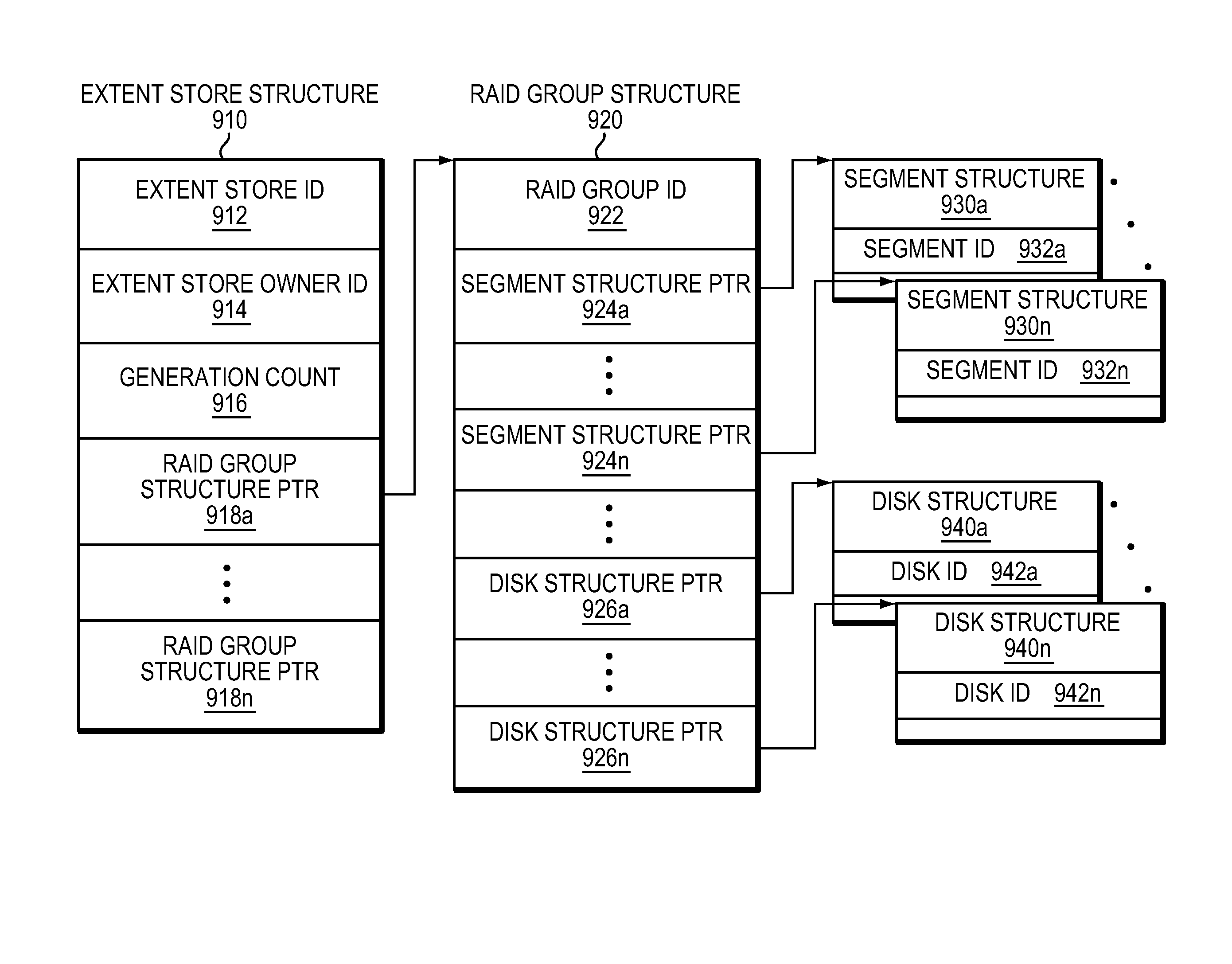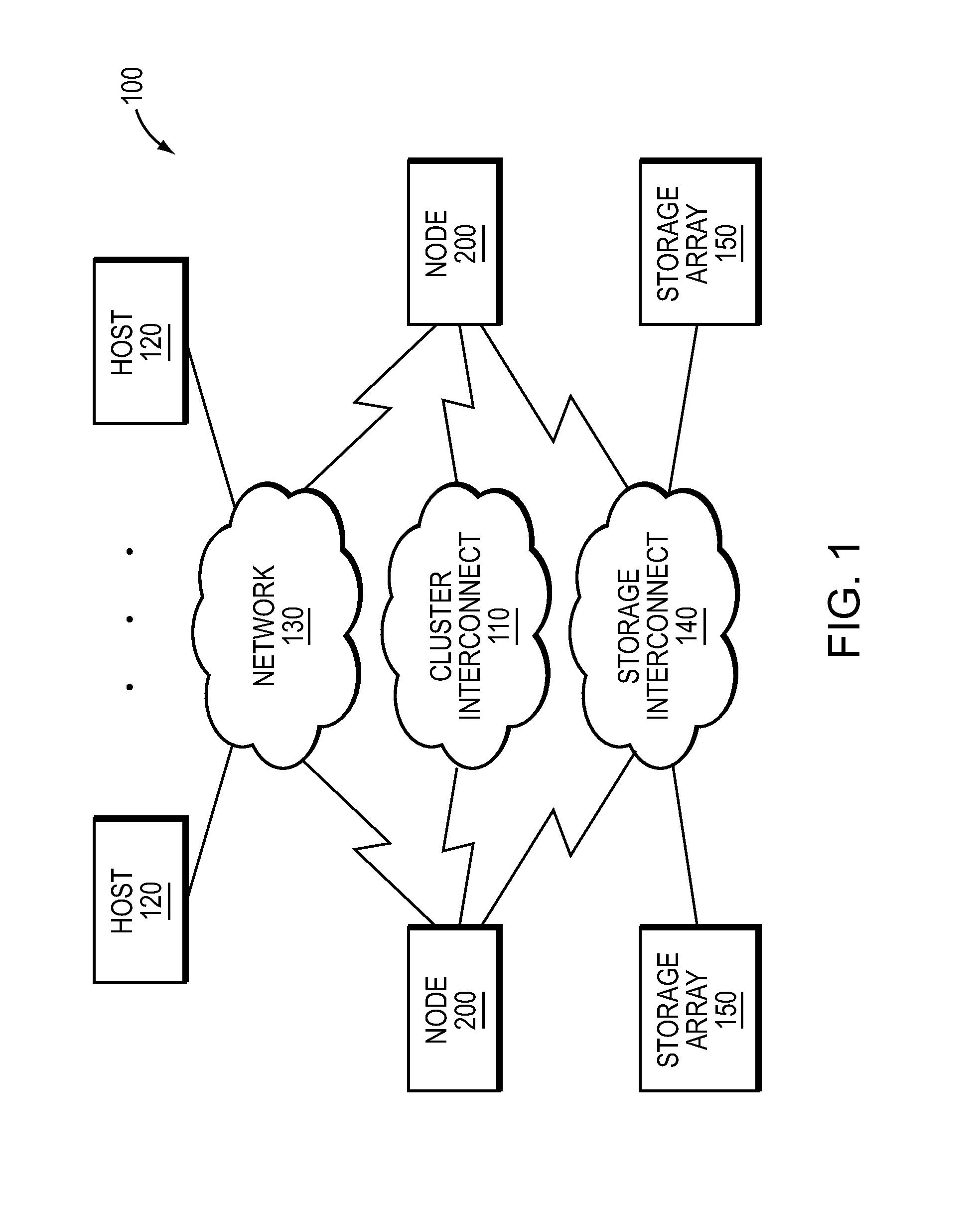Clustered RAID assimilation management
a storage system and cluster technology, applied in the field of cluster storage systems, can solve problems such as the notion of ownership of storage devices, e.g., by cluster nodes, and the inconsistentness of raid labels may aris
- Summary
- Abstract
- Description
- Claims
- Application Information
AI Technical Summary
Problems solved by technology
Method used
Image
Examples
Embodiment Construction
[0022]The embodiments described herein are directed to storing RAID-related metadata on a distributed database of a cluster (i.e., a cluster database), which is separate and apart from a storage array of SSDs configured to serve as main storage for nodes of the cluster. The RAID-related metadata may be embodied as RAID labels (or other data structures) having configuration information that identifies one or more RAID groups associated with an extent store and storage devices, e.g., SSDs, within each RAID group. As used herein, an extent store is illustratively a storage container stored on one or more SSDs (i.e., a set of SSDs from the storage array). Each SSD may be part of a RAID configuration topology tree structure that defines an extent store using a multi-level hierarchy (e.g., three levels), wherein the first level of the tree identifies the SSD, the second level identifies the RAID group to which the SSD belongs, and the third level identifies the extent store or storage con...
PUM
 Login to view more
Login to view more Abstract
Description
Claims
Application Information
 Login to view more
Login to view more - R&D Engineer
- R&D Manager
- IP Professional
- Industry Leading Data Capabilities
- Powerful AI technology
- Patent DNA Extraction
Browse by: Latest US Patents, China's latest patents, Technical Efficacy Thesaurus, Application Domain, Technology Topic.
© 2024 PatSnap. All rights reserved.Legal|Privacy policy|Modern Slavery Act Transparency Statement|Sitemap



